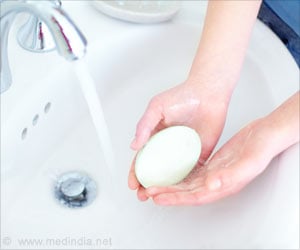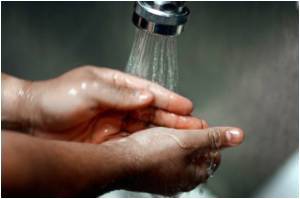- Handwashing is a proven efficient way to oppose the spread of disease and infection, especially during this COVID-19 pandemic
- Commonly, these viruses and bacteria gather in the rough surfaces (consists of valleys) of hands before getting inside the body
- A new study model confirms that it takes about 20 seconds of vigorous handwashing to dislodge any types of germs
Read More..
Handwashing Guidelines
The Centers for Disease Control and Prevention recommend at least 20 seconds of handwashing to ensure the removal of all particles.The study model does not reveal the chemical or biological processes of using soap. But the physical mechanisms behind the removal of infectious particles from hands are effectively portrayed.
The study validates that the timeframe for handwashing has good physical principles behind it – the 20-second approach.
History of Handwashing
The handwashing concept for arresting the spread of diseases was first drawn and analyzed by Hungarian physicist Ignaz Semmelweis in 1847. The physicist illustrated that "hand hygiene" dramatically decreased the fatality of patients in medical settings, especially in childbirth.Although the idea was subversive at that time because the fact of spreading disease by doctors themselves was rebellious. This led to a nervous breakdown (later committed to a Viennese asylum for the same) followed by the death of the physicist.
However, the revolutionary idea of Semmelweis has now become a simple yet effective life-saving tool and preventative measure for preventing the spread of disease for billions around the globe.
Mathematical Simulation
The infective particles are found to be caught on the rough surfaces of the hand with a potential number of peaks and valleys. The two hands are represented as two wavy surfaces and water as a thin film of liquid.Generally, these viruses and bacteria congregate in the valleys of hands before getting inside the body.
This mathematical simulation operates in two dimensions — one wavy surface moving past another wavy surface, with a thin film of liquid between the two. Hence high energy flow from the water must be ensured for the particles to get expelled out of the well.
Physics Behind It
The energy of the water flow depends on the speed of the moving hands; the stronger the flow, the easier it is for the removal of the particles. The author refers to the scrubbing of a stain on the shirt."If you move your hands too gently, too slowly, relative to one another, the forces created by the flowing fluid are not big enough to overcome the force holding the particle down," says study author Paul Hammond, of Hammond Consulting Limited, in the United Kingdom.
The study model thereby authenticates that it takes about 20 seconds of strenuous hand-washing to remove any types of germs.
How Does the Soap Work?
By illustrating the handwashing from a physics perspective, the team successfully estimated the time taken to remove these viruses and bacteria from the skin.Although the biological action of soap was not explained in the study, generally the soaps help lift dirt and germs from hands. Along with this, it also breaks the membrane of the viral or bacterial particles. This in turn assists in eradicating the pathogens.
Thus the "chemical attack" by the soap, along with the physical mechanism provides good protection against various infections. The current study sets the foundation that may further provide hints to formulate more efficient, environmentally friendly soaps.
References:
- Will we ever wash our hands of lubrication theory? - (https://aip.scitation.org/doi/10.1063/5.0060307)
- Wash your hands for 20 seconds: Physics shows why - (https://phys.org/news/2021-08-seconds-physics.html)
Source-Medindia









